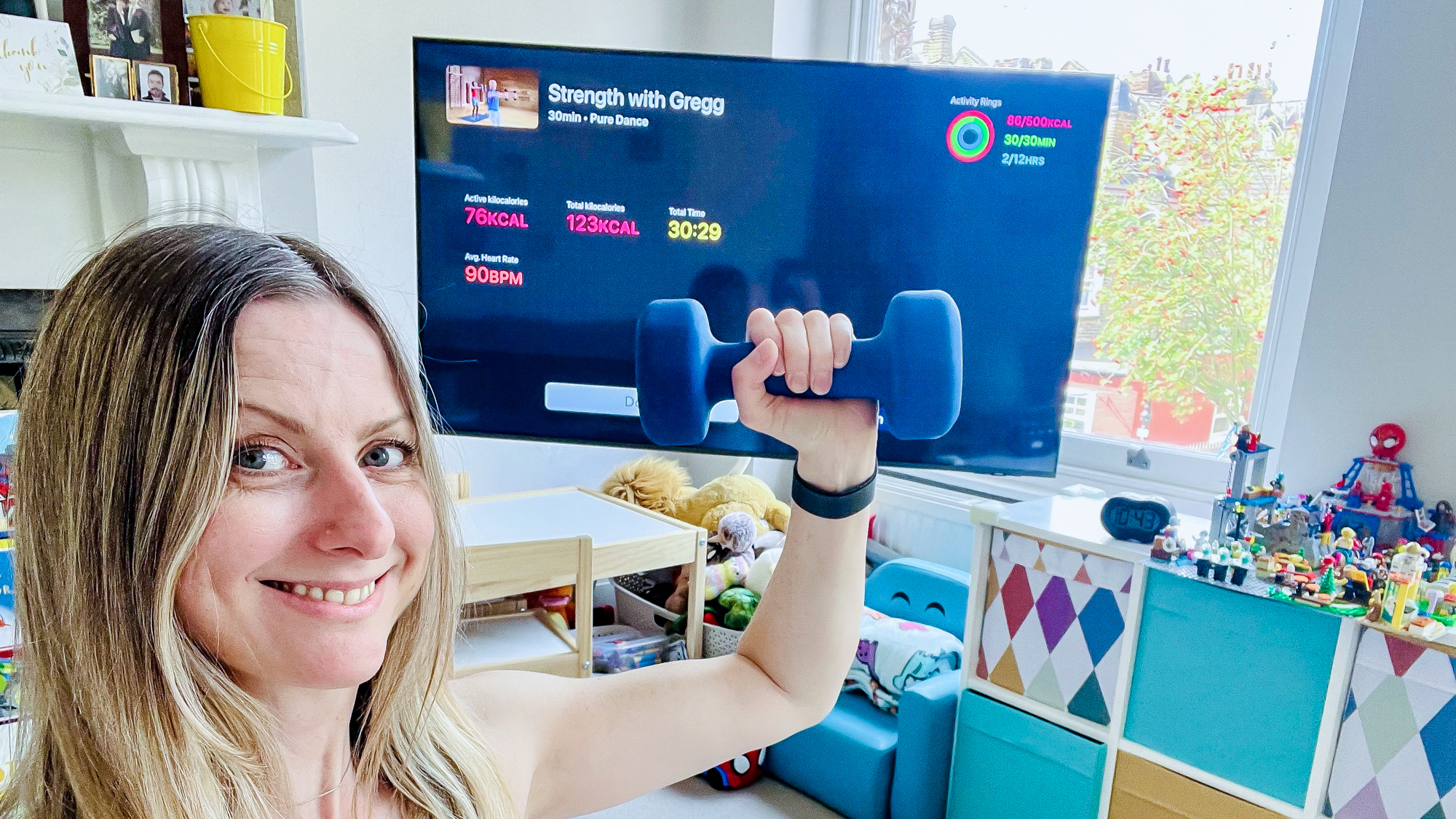
I always considered myself in pretty good shape — and then I had a baby.
In my pre-baby life, regular exercise was an essential part of my day-to-day schedule. I had weekly training sessions and did online yoga. I was sporty too, playing netball a couple of times a week and taking up tennis lessons in a bid to finally beat my sister.
I had an active pregnancy as well, doing prenatal workouts with my personal trainer and pregnancy Pilates online. My fitness levels served me well for labor (all two-and-a-half days of it), and in the physically demanding months following my son’s arrival too – from carrying his bassinet upstairs to holding him while he fed.
After getting signed off to return to exercise at my six-week postpartum check, I returned to my personal trainer, focusing on strength training and stretching exercises. And after some pelvic floor exercises featuring a lot of Kegels, I could return to playing netball.
But things shifted when I returned to work. My job (ironically as a fitness and wellbeing editor) left me physically exhausted as I tried to juggle a full-on role with motherhood. It also meant there was little time to plan meals and cook from scratch as I’d done during my maternity leave.
Then, last October, my role suddenly came to an end, meaning I had to cut back on my expensive personal training sessions. Slowly but surely I found myself moving less, eating more of the wrong stuff, and too exhausted to care.
It didn’t take long before I felt my fitness slipping away. I became increasingly out of breath when carrying my now two-year-old son even short distances, and struggled to pick him up. My already-depleted energy levels took another hit, leaving me constantly tired and with limited enthusiasm for playing energetic games with him.
I noticed a change in my body, too. Clothes I’d previously felt good in suddenly felt tight and uncomfortable. And once I stopped breastfeeding, I quickly gained five kilos in weight.
So when my partner signed us up for Apple Fitness+, the ‘Six Weeks to Restart Your Fitness’ program instantly caught my eye. I needed something to help me get out of my fitness funk: could this be it?
What is the Restart Your Fitness challenge?
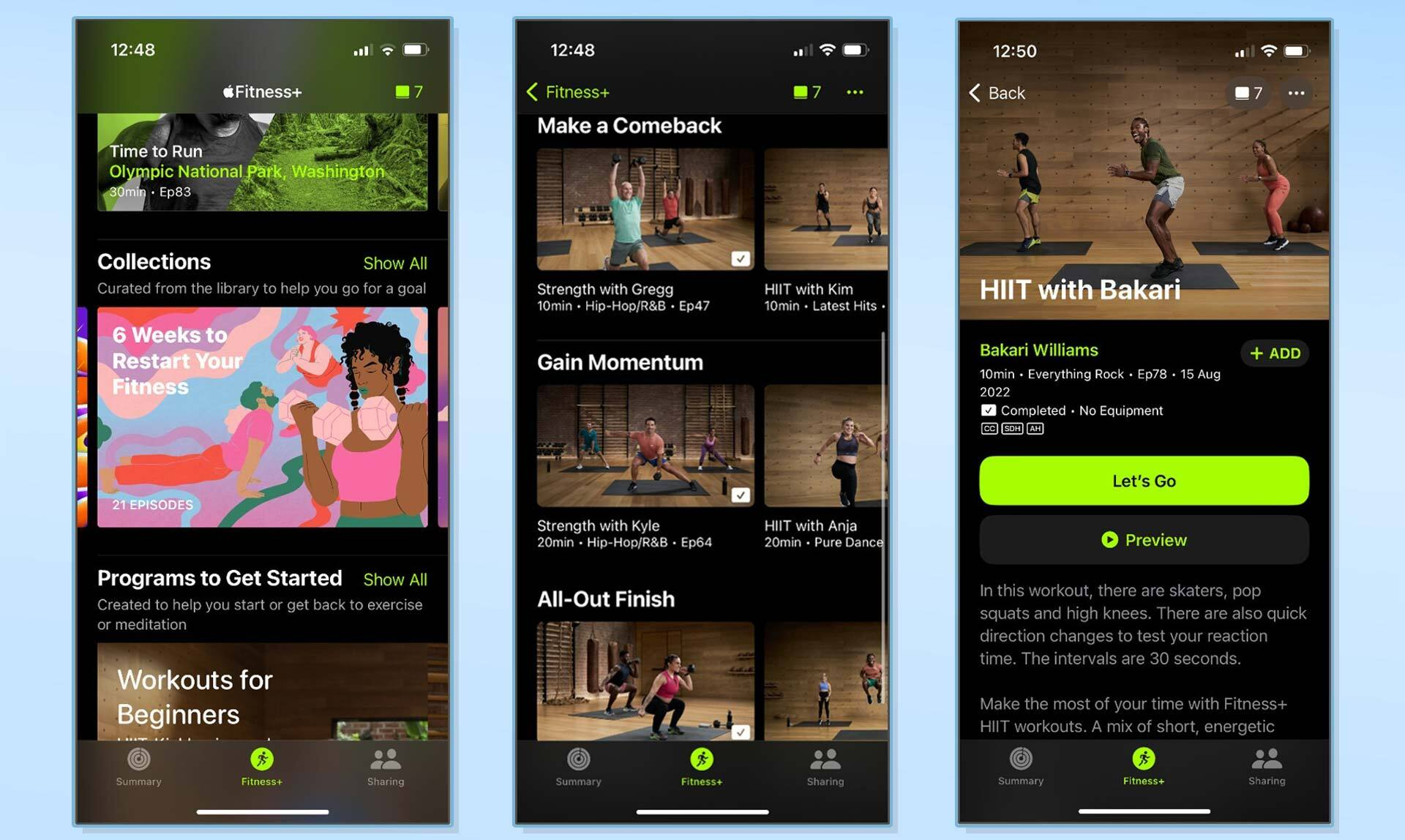
The 6 Weeks To Restart Your Fitness program on Apple Fitness+ features daily workouts of increasing length. You spend two weeks in the “Make a Comeback” section, where workouts are typically just 10 minutes long — an easy way to ease myself back into regular exercise, I figured.
After that, you “Gain Momentum” over the next two weeks, with classes of up to 20 minutes each. Then the final two weeks encourage an “All-Out Finish”, with mostly 30-minute workouts.
Each week consists of two HIIT workouts, three strength sessions, one core class, and one yoga routine. In terms of equipment, the requirements were minimal — all you need is a yoga mat and some weights, ideally adjustable dumbbells so you can change the load between moves.
And so, I dug out my best gym leggings and got to work. Here’s how I got on…
The platform was very motivating
There's a reason why Apple Fitness+ is constantly ranked among the best workout apps you can download right now. The user experience is slick, the visuals are pleasing, and the trainers are very motivating.
But what I found particularly effective were the insights it offered into my own performance. Stats tracked by my Apple Watch were displayed on-screen during my workouts, including my heart rate, calories burnt, and the progress of my Activity Rings.
For HIIT sessions, there was also a ‘burn bar’ — a real-time comparison of my performance with that of others who had previously completed the workout. It is shown as your calories burned, accounting for weight to ensure an equal comparison.
Seeing my place on the burn bar tip from ‘middle of the pack’ to ‘front of the pack’ (and, on one glorious occasion, ‘ahead of the pack’) helped me keep working hard when I started to flag, whilst seeing it drop back pushed me to up my work rate.
Something else that gave my motivation a real boost was closing my Exercise Ring (which tracks how many minutes of brisk activity you do each day — my goal is currently set at 30 minutes) before I sat down at my desk. Honestly, knowing I’d already ticked a workout off my to-do list left me feeling pretty darn smug.
I discovered that exercise breeds exercise
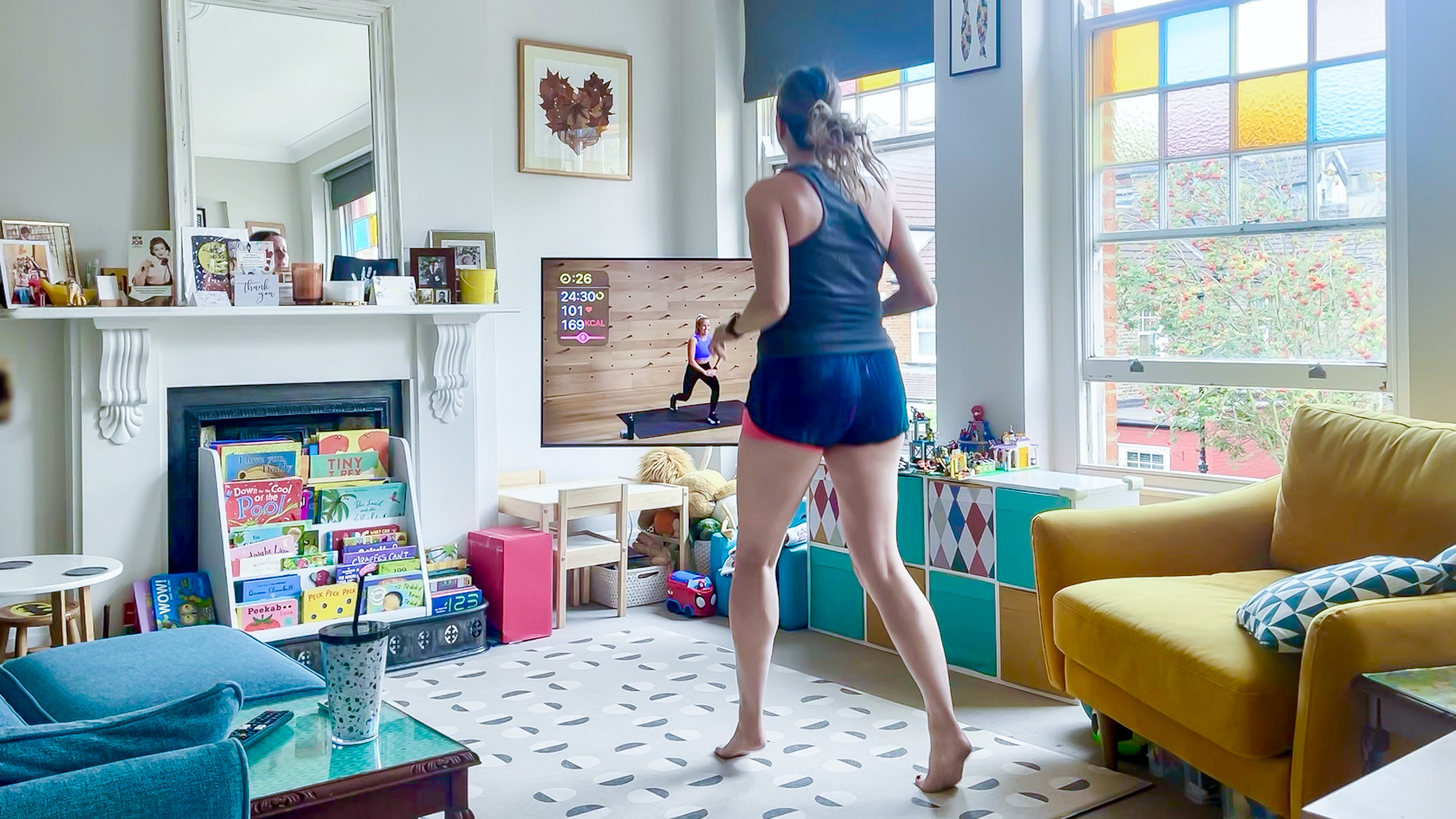
A brilliant CBT (cognitive behavioral therapy) practitioner once told me that if I was putting off a task, I should say to myself that I’d just do 10 minutes to start with. Her theory was that I’d end up doing more work once I got into it — but that 10-minute target would make it easier to start.
I found the same was true of this fitness program. The fact that the first two weeks of workouts were only 10 minutes long not only made it mentally easier to tackle them every day, but I also found that once they were done I was fired up to do more.
For example, one day I followed my upper body strength class with a 10-minute online yoga session on one of my favorite YouTube channels, Yoga with Kassandra, to give my body a bit of a stretch.
Then, spurred on by her challenge to “try a new form of movement today”, I followed that up with a 10-minute Popsugar salsa pop workout. And just like that, what was only supposed to be 10 minutes of exercise turned into half an hour!
“When we complete tasks, our brain releases dopamine which causes positive feelings such as happiness, pleasure, and motivation,” observes Shakira Akabusi, a pre and postnatal fitness expert and the author of The Strong Like Mum Method.
“This can inspire us to continue setting and achieving more goals. The key is to start small and to make it sustainable,” she adds, which is exactly what the six-week program does.
I formed more healthy habits
“One of the great things about getting started with healthy changes and being more active is that it can motivate us to continue making healthy changes in other areas of our lives — for example with our sleep and nutritional habits,” says Akabusi.
This was definitely true for me after starting the six-week challenge. I quickly found myself more conscious of the choices I made in my wider life, particularly when it came to food.
Not wanting to undermine my hard work on the exercise mat, I started making better choices — swapping a biscuit for a banana, for example, or whipping up some scrambled eggs for breakfast rather than reaching for a pastry.
My water intake increased (it helps to keep a water bottle nearby) and I made more of an effort to plan meals in advance too, ensuring a good mix of protein, carbs, and vegetables, helping to tame my growing Uber Eats habit.
This response is typical, according to research. Akabusi points to a 2019 study, published in the International Journal of Obesity, which found that after exercising for several weeks, formerly sedentary study participants were more likely to choose foods like lean meats, fruits, and vegetables, while preferences for fried foods, sodas, and other unhealthy options decreased.
I also started prioritizing sleep, creating a wind-down routine that featured a cup of herbal tea, low lighting, and 10 minutes of reading before lights out. Between that and the additional movement in my day, I found sleep came easier.
Morning workouts suited me best
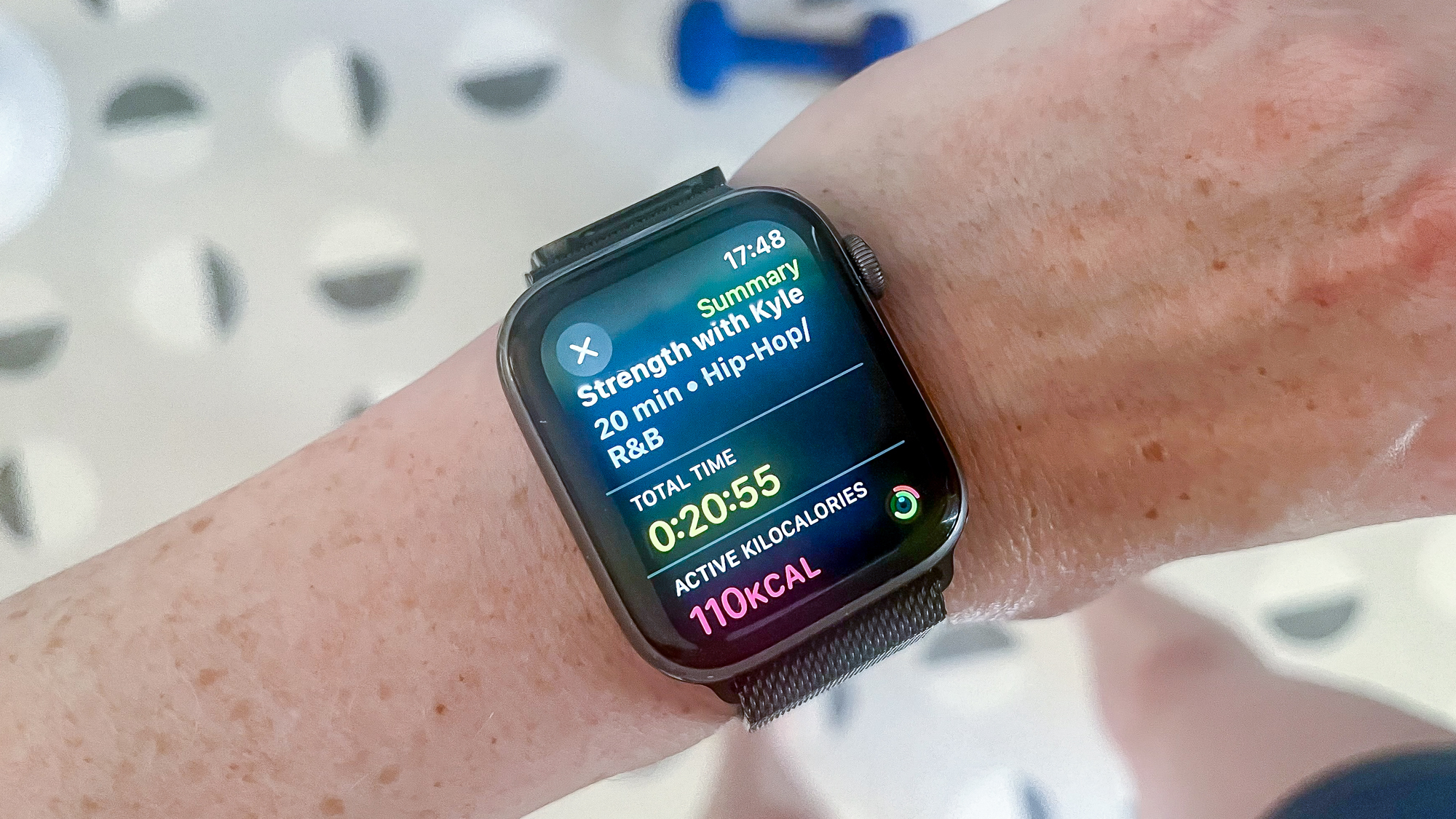
I am very much not a morning person, so it surprised me to discover that exercising before I started my working day worked best for me. If I put it off until later in the day, I was more likely to find reasons not to workout at all — "I’ve just eaten", "I’ll wait for my food to go down" or "I won’t have time to shower before my meeting if I do it now."
On other days, I’d find myself frantically rushing to fit it in before I had to leave to pick up my son from nursery (which is how, on one particularly hectic day, I found myself doing a 10-minute core workout on my bedroom floor in a summer dress).
But on the days I did the workout in the gap between my son going to nursery and sitting down at my laptop, not only did I get the satisfaction of ticking something off my to-do list before 9 am, but it also set the tone for the rest of my day. I felt capable, focused, and driven.
Akabusi, a fellow lover of early workouts, points to a combination of daylight signaling to our body that it’s time to wake up and a natural rise in cortisol first thing in the morning by way of explaining why mornings are such a great time to exercise.
However, she also says not to discount later workouts entirely. “Some research has suggested that muscle strength is typically highest in the afternoon or evening and that strength training at this time could be beneficial,” she says.
“The most important thing is to establish some consistency, so the best time to exercise is whenever you can make it a regular habit.”
Life sometimes got in the way
Making time for the 10-minute workouts was easy enough. But once the times upped to 20 and then 30 minutes, I found it harder to fit them in every day, with the demands of work, parenting, and life admin getting in the way.
This occasionally resulted in feelings of guilt or ‘not trying hard enough’. But, as Akabusi points out, "Being active doesn’t have to mean a structured workout every day. My greatest tip for sustaining exercise is to find something you enjoy.
“Exercise shouldn’t feel like a chore and there are so many options of how to workout; dancing, walking, swimming, playing a game of rounders with friends, or building a fun obstacle course outside with your children!”
The results were impressive too
At the end of the six-week program, a glance at the trends section of the Fitness app on my iPhone shows my VO2Max — a key measure of cardiovascular fitness — trending upwards.
While weight loss wasn’t the main reason I embarked on this challenge, I did lose a little (around a kilogram) and started to notice a bit more definition around my stomach, too.
However, Akabusi reminds me that weight is not the only indicator of fitness and wellbeing. “Alongside weight or measurements, energy levels, muscle tone, sleep pattern, and mood are crucial indicators of health,” she says.
I wholeheartedly agree — the most significant change I experienced was how I felt in myself. As early as week two, I saw a marked increase in my energy levels. Getting out of bed when my son shouted for me at 6 am felt easier. And on the netball court, I noticed my reactions were sharper and my stamina was better, helping me to a player of the match award.
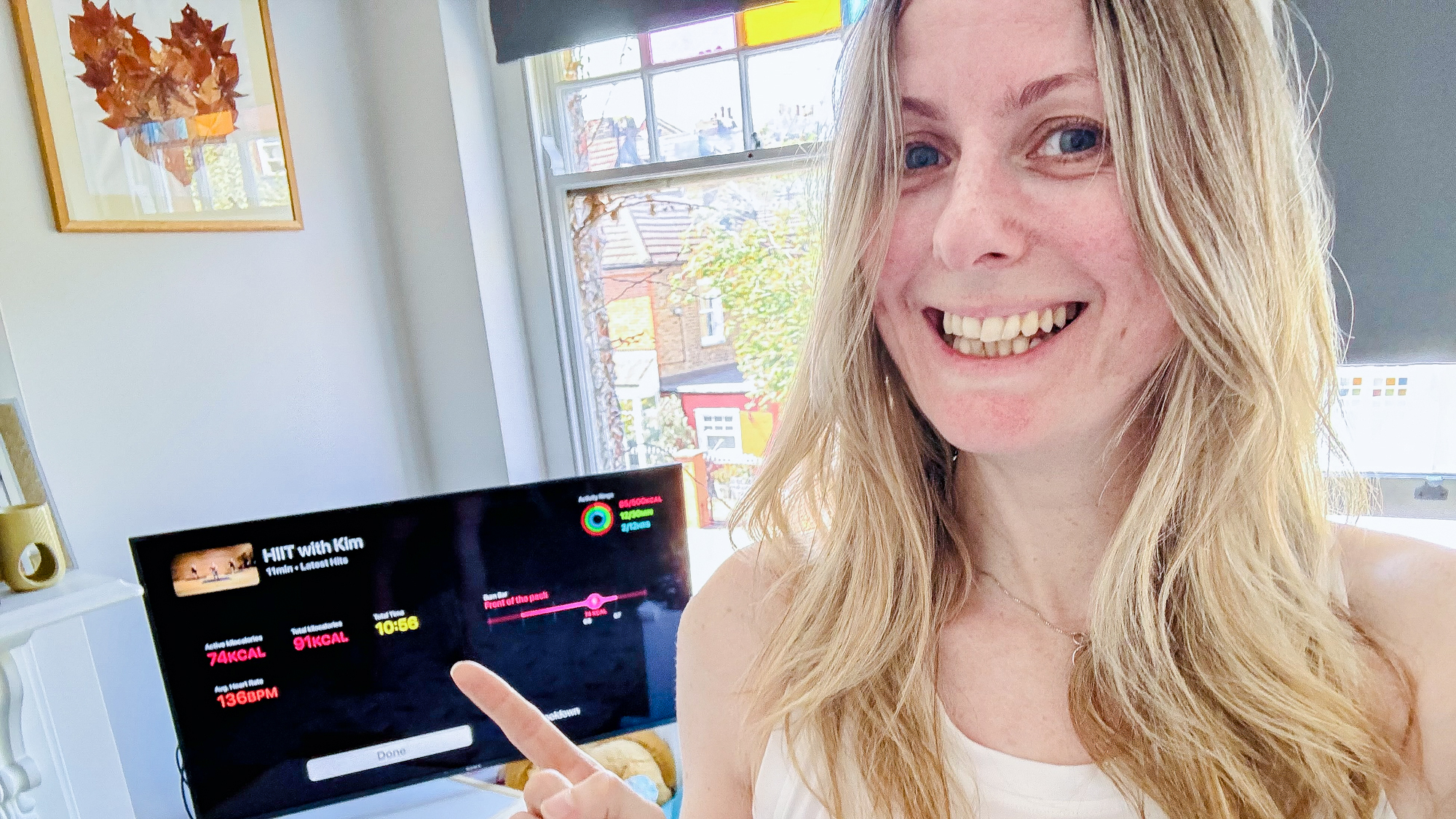
My ability to get stuff done improved, too. I felt more capable of organizing my thoughts and getting on with things, which was a welcome change to the cloud of chaos that I’d become used to operating under.
Ultimately, I felt happier. It almost sounds cliche, but it’s a simple, scientific truth: exercise makes us happy. Granted, perhaps not whilst you’re in the middle of a 50-second set of burpees (up there with mountain climbers on the list of the most evil of exercises, IMO).
But as the days and weeks of the challenge passed by, I noticed I felt calmer, more upbeat, and generally optimistic about life. “Exercising can help us to have more energy and feel more positive,” Akabusi confirms. “When we exercise our body is encouraged to produce more ‘happy hormones’ such as endorphins and serotonin, which helps to improve our mood.
“We also have an increase in oxygen and nutrient delivery to our muscles and organs as our heart rate increases, pumping blood around our body, helping to give us an energy boost.”
The six-week challenge was exactly what I needed
With the six-week challenge over and my relationship with fitness well and truly reignited, I feel determined to build upon the start I’ve made. I’ll definitely continue using Apple Fitness+ to do regular — but perhaps not daily — workouts.
Helpfully, the six-week program helped me identify my favorite trainers, such as gentle giant Gregg Cook and the irresistibly upbeat Bakari Williams and Jamie-Ray Hartshorne. Going forward, I’ll add workouts with these coaches to my Apple Fitness+ list so I can get going with them quickly.
If I lose a bit more weight, great — but it’s the broader health, fitness, and well benefits I’m hoping to hang on to. Here’s to a healthier, and happier, me.







